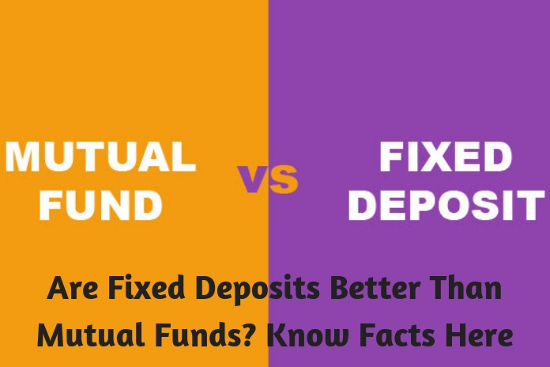Fixed deposits have proved to be a reliable investment instrument since decades. It is a safe investment instrument and an income provider for investors across all age groups, especially, retired individuals. The two basic types of fixed deposits are: cumulative fixed deposits and non-cumulative fixed deposits. Non-banking financial companies offer higher fixed deposit rates as compared to conventional FDs from banks.


Investors who have a good risk appetite invest in mutual funds as they provide high returns and convenient liquidity options. Mutual funds allow you to invest in bonds, securities, equities and much more.
To earn attractive returns, you can invest in multiple investment instruments. Let us look at the differences of FD vs Mutual Fund and see which one of these is best suited for your investment profile.
Risks
FDs are risk-free investments as they do not get affected by fluctuating market conditions. The interest rate is predetermined and can be known in advance. Your returns are guaranteed. Upon maturity, you will get the amount you are entitled to. Mutual funds such as equities are subjected to market risks. However, you can mitigate these risks by seeking professional advice from mutual fund managers.
Taxation
If you have gained more than INR 40,000 (as per Interim Budget 2019) interest on an FD in a year, then you will have to pay 10 percent as TDS. However, you can get a tax exemption (up to INR 1.5 lacs) if you invest in a 5-year tax-saving FD. Also, if your taxable income is below the taxable amount, you can claim the tax deductions on your fixed deposits by filing Form 15G and 15H.
Gains from long term equity mutual funds are not taxable whereas gains from short term equity mutual funds (which are less than a year) are taxable. Debt funds which have long lock-in periods and capital gains with short lock-in periods are also taxable.
Returns
Mutual funds give high returns compared to FDs, especially when you invest for a longer period. Fixed deposits pay you with high returns depending on the lock-in period. If you employ the strategy of laddering, i.e., investing in multiple FDs of different amounts across varying interest rates and varying tenors, you can benefit from the averaging of fluctuating interest rates and earn handsome returns from your FD investments. You can use online FD calculator to calculate your maturity amount for various FD schemes.
Investment costs
For fixed deposits, you do not need any professional assistance, and therefore no additional costs are involved in the investment process. With Experia- your online fixed deposit account, you can easily manage and track multiple FDs online from the comfort of your homes.
Mutual funds, on the other hand, might incur additional expenses in the form of consultation fees which is charged by the professional who handles your investment portfolio. However, some investors do not mind these additional investment costs as the expected returns are high.
Why should you prefer fixed deposits over mutual funds?
- Fixed deposits are the safest form of investment as they provide guaranteed returns once your FD gets matured. Currently, FD interest rates are very high due to various macro-economic factors. Hence, it makes sense to lock-in your investments at high interest rates.
- Since you can get a loan against your fixed deposits, they act as a buffer in times of financial crisis or when in need of lump sum money.
- With fixed deposits, you can lock-in your earnings for 1-10 years. This flexibility of tenor helps you in planning your investments for the future.
Some company fixed deposits like Bajaj Finance Fixed Deposits are accredited by ICRA and CRISIL Rating Agencies for their safety and credibility. Investing in these will not only help you preserve your capital amount but also ensure constant growth of your funds at high interest rates (up to 8.75%). You can start investing with a minimum deposit amount of INR 25,000.









